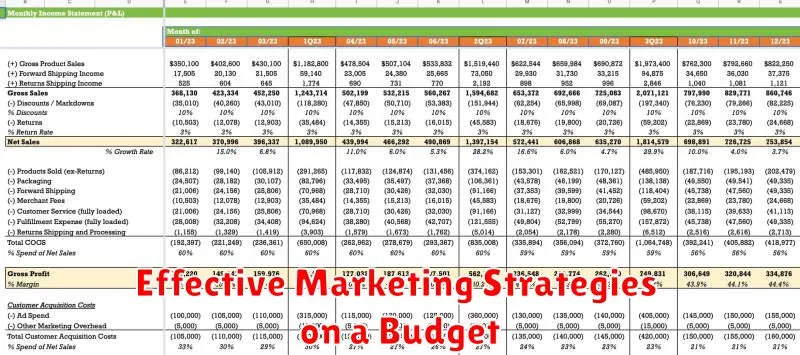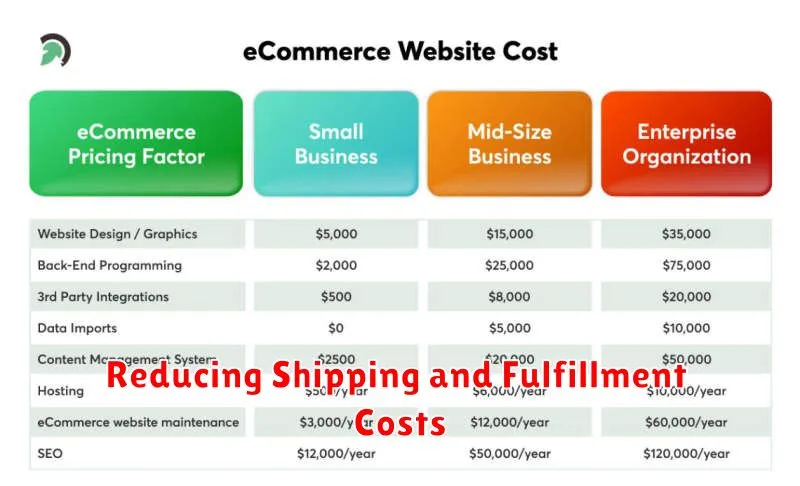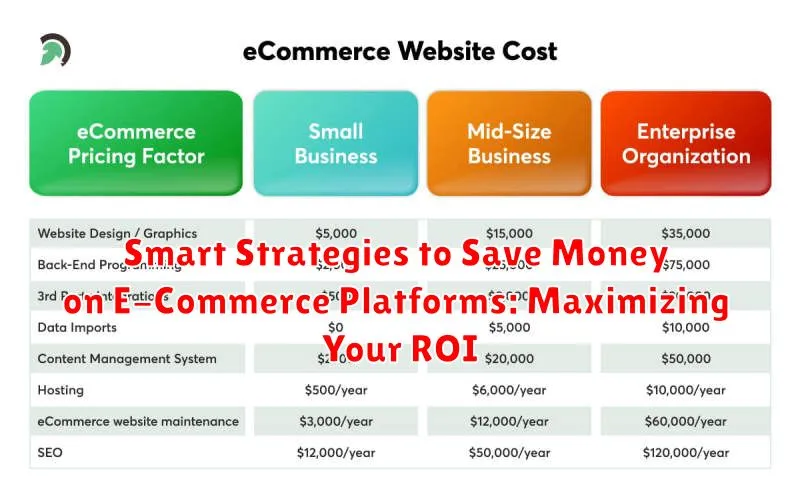In today’s digital marketplace, e-commerce platforms have become essential for businesses seeking to expand their reach and boost sales. However, effectively managing advertising spend and maximizing return on investment (ROI) on these platforms can be challenging. This article explores smart strategies to save money on e-commerce platforms while maximizing your ROI. We’ll delve into practical tips and techniques, covering crucial areas such as strategic bidding, targeted advertising, and performance optimization to help you achieve sustainable growth and profitability.
Whether you’re a seasoned e-commerce veteran or just starting out, understanding how to optimize your campaigns is paramount. From keyword research and audience segmentation to A/B testing and conversion rate optimization, this guide will provide you with actionable insights to refine your e-commerce strategy. By implementing these cost-effective strategies, you can significantly improve your bottom line and gain a competitive edge in the dynamic world of online retail. Learn how to make your advertising budget work harder and achieve maximum ROI on your e-commerce platform investments.
Choosing the Right E-Commerce Platform for Your Budget
Selecting the right e-commerce platform is a critical first step in managing your budget. Different platforms cater to varying business sizes and needs, impacting both upfront and ongoing costs. Consider your sales volume projections, product catalog size, and required features when evaluating platforms.
For businesses just starting out or with limited budgets, hosted solutions like Shopify or Squarespace offer attractive monthly plans that include hosting, security, and basic features. This eliminates the need for technical expertise and upfront investment in server infrastructure.
As your business grows and requires more customization and control, self-hosted platforms like WooCommerce or Magento become viable options. While they offer greater flexibility, they also require technical expertise or the willingness to hire developers, impacting overall costs. Carefully evaluate the long-term implications of each option.
Remember to factor in transaction fees charged by payment gateways and the platform itself. These seemingly small percentages can significantly impact your profit margins over time.
Cost-Effective E-Commerce Platform Features
When selecting an e-commerce platform with budget constraints in mind, prioritize essential features that directly impact your bottom line. Don’t overspend on bells and whistles you won’t utilize.
A robust product management system is crucial. This includes efficient inventory tracking, variant management, and the ability to easily add and update product information. Look for platforms that offer these features in their basic plans.
Built-in SEO tools are essential for organic visibility. Basic SEO features, such as customizable meta descriptions and title tags, can significantly impact your search engine rankings and drive traffic without additional marketing spend.
Consider the transaction fees charged by the platform. Some platforms charge a percentage per transaction, while others offer tiered pricing. Factor this into your cost analysis, especially if you anticipate high sales volume.
A platform with integrated marketing tools like email marketing or basic social media integration can consolidate your efforts and potentially reduce reliance on separate, paid marketing software.
Leveraging Free Trials and Open-Source Options
Exploring free trials and open-source platforms offers a strategic advantage for budget-conscious businesses venturing into e-commerce. Free trials provide a risk-free opportunity to test the functionalities of various platforms before committing financially. This hands-on experience allows you to assess whether a platform aligns with your business needs and technical capabilities.
Open-source platforms present a cost-effective alternative to proprietary solutions. While they often require more technical expertise, they offer greater flexibility and customization options. With open-source, you have complete control over your store’s code, allowing for tailored modifications and integrations. Additionally, the large and active communities surrounding open-source platforms provide valuable support and resources.
Carefully evaluate the long-term costs associated with open-source platforms. While the software itself is free, expenses like hosting, development, and maintenance should be factored into your budget. A thorough cost-benefit analysis will help determine whether an open-source solution is the optimal choice for your business in the long run.
Optimizing Your Store Design for Conversions
A well-designed e-commerce store is crucial for converting visitors into paying customers. User experience (UX) plays a vital role in this process. A confusing or clunky interface can drive potential customers away.
Prioritize clear navigation. Ensure your product categories are logically organized and easily accessible. A prominent search bar is essential for quick product discovery.
High-quality product photography is a must. Multiple images from different angles, showcasing details and texture, can significantly improve conversions. Consider incorporating videos to demonstrate product usage.
Streamline the checkout process. Minimize the number of steps required to complete a purchase. Offer guest checkout options to avoid forcing account creation. Clearly display shipping costs and delivery times upfront to avoid surprises.
Mobile optimization is no longer optional. Ensure your store is responsive and functions flawlessly across various devices. A poor mobile experience can drastically reduce conversion rates.
Effective Marketing Strategies on a Budget

Driving traffic and boosting sales doesn’t always require a massive marketing budget. Several cost-effective strategies can deliver impressive results.
Social Media Marketing
Organic social media marketing is a powerful tool. Create engaging content, interact with your followers, and run contests to build a loyal community. Consider utilizing social media advertising with a small budget, targeting specific demographics for better ROI.
Email Marketing
Building an email list allows for direct communication with potential and existing customers. Offer valuable content and exclusive deals in exchange for email subscriptions. Utilize automated email campaigns to nurture leads and promote new products or sales.
Content Marketing
Creating high-quality, informative content relevant to your products can attract organic traffic from search engines and establish you as an industry expert. Consider starting a blog or creating informative videos related to your products.
Influencer Marketing (Micro-influencers)
Partnering with micro-influencers who have a smaller but highly engaged audience can be a cost-effective alternative to celebrity endorsements. Look for influencers whose audience aligns with your target market.
Reducing Shipping and Fulfillment Costs

Shipping and fulfillment are significant expenses for e-commerce businesses. Optimizing these processes is crucial for maximizing ROI. Negotiating shipping rates with carriers is a key first step. Building strong relationships and leveraging shipping volume can unlock significant discounts.
Packaging optimization also plays a vital role. Using appropriately sized packaging minimizes dimensional weight charges. Exploring cost-effective packaging materials can further reduce expenses without compromising product protection.
Strategically locating warehouses can reduce shipping distances and times. Distributing inventory closer to customers minimizes transit costs and can enhance delivery speed, improving customer satisfaction.
Consider offering free shipping thresholds. This can encourage larger orders, increasing average order value and potentially offsetting the cost of free shipping.
Managing Customer Service Expenses
Effective customer service is crucial for e-commerce success, but it can also be a significant expense. Optimizing your customer service strategies can lead to cost savings without sacrificing customer satisfaction.
Automating responses to frequently asked questions (FAQs) through chatbots or a comprehensive FAQ section can drastically reduce the need for live agents. This allows your team to focus on more complex issues.
Empowering customers with self-service tools, such as detailed order tracking and user-friendly return portals, minimizes the need for customer support interaction. Clear and concise website information also contributes to fewer inquiries.
Consider outsourcing customer service during off-peak hours or for specific tasks. This can be a cost-effective way to maintain 24/7 support without the expense of a full-time in-house team.
Regularly analyze customer service data to identify trends and pain points. Addressing the root causes of common customer issues can reduce the overall volume of inquiries and associated costs.
Utilizing Analytics to Track and Improve ROI
Data analytics are essential for understanding e-commerce performance and optimizing ROI. By tracking key metrics, businesses can identify areas for improvement and make informed decisions about resource allocation.
Start by monitoring website traffic, including sources, bounce rates, and time spent on pages. This data reveals which marketing channels are most effective and highlights potential issues with website usability.
Conversion rates are a crucial indicator of sales effectiveness. Track conversions at each stage of the sales funnel to pinpoint drop-off points and optimize the customer journey. Analyze cart abandonment rates to understand why customers leave without completing purchases.
Analyzing customer lifetime value (CLTV) helps businesses understand the long-term profitability of customer relationships. By focusing on high-CLTV customers, businesses can maximize their return on marketing and customer service investments.
Finally, use analytics to track the ROI of specific marketing campaigns. By measuring the cost of acquisition and the resulting revenue, businesses can identify the most profitable campaigns and allocate resources accordingly.
Exploring Alternative Payment Gateways
Payment gateway fees can significantly impact your bottom line. While established gateways offer convenience, exploring alternative options can lead to substantial savings.
Consider factors like transaction volume, average order value, and the types of cards your customers typically use when evaluating alternatives. A high-volume business processing primarily small transactions might benefit from a flat-rate gateway, while a business with larger average order values might find a percentage-based model more advantageous.
Researching and comparing various providers is crucial. Look beyond the headline rates and delve into the details of each provider’s fee structure. Be mindful of potential setup fees, monthly charges, cross-border fees, and chargeback fees.
Some alternative payment gateways specialize in specific regions or currencies, offering potentially lower rates for businesses operating within those parameters. Direct bank transfers, though less common for e-commerce, can offer a lower-cost alternative for certain business models.

